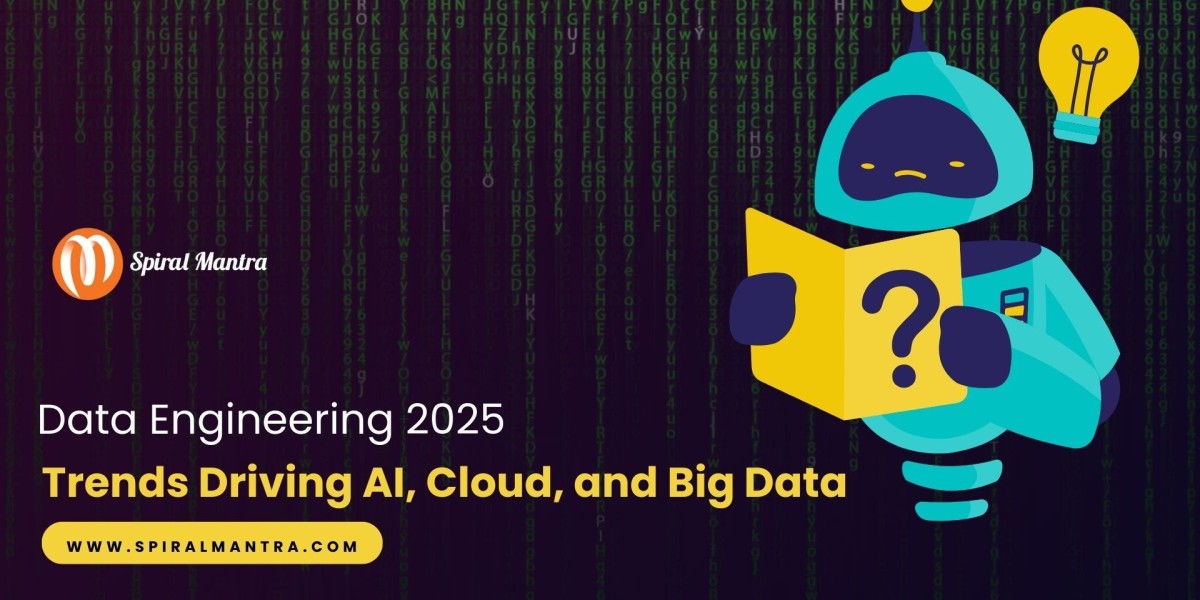Big data engineering is no longer an option—it’s a necessity for every organization. With 402.74 million terabytes of data generated daily (according to Exploding Topics), businesses must continuously adapt to the latest technologies to stay competitive. In 2025, the spotlight will be on cloud data engineering, AI advancements, big data technologies, and machine learning innovations. Concepts like multi-cloud strategies, hybrid cloud solutions, serverless computing, and generative AI are no longer just buzzwords—they are transforming how businesses operate and compete.
This article dives deep into the top data engineering trends of 2025, helping CIOs, CTOs, and IT leaders rethink their digital transformation strategies and make informed decisions.
Did You Know?
- $3.1 trillion is lost annually by businesses due to poor data quality.
- $4.88 million was the average cost of a data breach in 2024.
These staggering figures highlight the urgent need for robust data engineering strategies. Companies like Spiral Mantra offer advanced hybrid cloud solutions and data engineering expertise to help businesses tackle these challenges. Contact their data engineering experts at sales@spiralmantra.com to stay ahead in the competitive market.
Why Do Data Engineering Tools and Trends Matter?
Data engineering tools like Apache Spark, Snowflake, Kafka, Amazon RedShift, Tableau, and Azure are reshaping how companies manage and analyze data. By embracing emerging trends like MLOps, AIOps, and LLM copilots, organizations can improve efficiency, enhance decision-making, and drive business growth.
Let’s explore the leading data engineering trends set to redefine the technological landscape in 2025.
Cloud Data Engineering Trends in 2025
1. Advanced Multi-Cloud Strategy
By 2025, a record 80% of organizations will run applications across Azure, AWS, and Google Cloud, adopting multi-cloud strategies to improve flexibility, reduce costs, and enhance resilience.
Why It Matters:
- Minimizes the risk of vendor lock-in.
- Ensures business continuity by distributing workloads across multiple platforms.
Technical Insight:
- Azure Arc provides a unified approach to managing multi-cloud environments, offering cross-platform visibility and enhanced security governance.
Example:
A manufacturing company reduced operational costs by 30% by distributing workloads between Azure and AWS using Azure Arc for centralized management.
2. Serverless Computing: Redefining Efficiency
Serverless computing allows businesses to focus on code without worrying about infrastructure. Platforms like Azure Functions scale automatically based on demand, offering a cost-effective solution for event-driven tasks.
Why It Matters:
- Reduces operational overhead and infrastructure management.
- Costs align with actual usage, making it budget-friendly.
Technical Insight:
- Use Azure Event Grid for real-time, event-driven applications with low latency and high scalability.
Example:
A retail company accelerated their time-to-market by 40% by using Azure Functions to process orders during peak seasons.
3. Quantum Computing in the Cloud
Quantum computing, powered by platforms like Azure Quantum, is unlocking solutions to previously unsolvable problems, such as supply chain optimization and financial modeling.
Why It Matters:
- Solves complex computational problems faster.
- Optimizes processes like portfolio management and logistics.
Technical Insight:
- Use the Azure Quantum development kit for tasks like material simulation and optimization algorithms.
Example:
A logistics company reduced delivery inefficiencies by 18% through quantum-inspired algorithms in Azure Quantum.
4. Advanced Cloud Security for Hybrid Environments
With the rise of cyber threats, investing in intelligent, automated security is crucial. Azure Security Center provides integrated security across multi-cloud and hybrid environments.
Why It Matters:
- Protects against data breaches, ensuring regulatory compliance.
- Safeguards brand reputation and customer trust.
Technical Insight:
- Implement a zero-trust architecture using Azure Sentinel for proactive threat detection.
Example:
A financial institution reduced security breaches by 92% by integrating Azure Sentinel into its Security Operations Center (SOC).
Data Engineering Innovations in 2025
5. DataOps Transformation: Automation & Agility
DataOps brings together automation, collaboration, and monitoring, allowing businesses to streamline data processes and improve analytics.
Why It Matters:
- Reduces data processing costs by 20%.
- Accelerates data delivery for faster insights.
Technical Insight:
- Use Azure Data Factory to implement DataOps, automating data pipelines and integrating with Power BI for real-time analytics.
Example:
A healthcare provider improved decision-making speed by 35% by adopting DataOps with Azure Data Factory.
6. Advanced Analytics with AI Integration
Advanced analytics, driven by tools like Azure Synapse Analytics, transforms raw data into actionable insights using predictive and prescriptive models.
Why It Matters:
- Enhances business intelligence and identifies new opportunities.
- Mitigates risks by forecasting potential issues.
Technical Insight:
- Use Azure Machine Learning for advanced modeling and integrate it with Synapse Analytics.
Example:
An insurance company reduced fraudulent claims by 42% through predictive modeling using Azure Synapse and ML algorithms.
7. Graph Databases for Complex Relationships
Graph databases like Azure Cosmos DB are essential for analyzing interconnected data, especially in areas like fraud detection and recommendation systems.
Why It Matters:
- Handles complex relationships that traditional relational databases cannot.
Example:
A social network improved user recommendations by 50% using Azure Cosmos DB graph queries.
AI Trends in Data Engineering
8. Generative AI for Automation
Generative AI, powered by Azure OpenAI, automates content creation, enhances customer experiences, and accelerates innovation.
Why It Matters:
- Reduces manual effort in content generation.
- Improves customer engagement with personalized responses.
Example:
A marketing company increased content production by 45% by using Azure OpenAI for automated marketing materials.
9. Explainable AI (XAI) for Transparent Decisions
Explainable AI ensures AI model transparency—critical in sectors like healthcare and finance, where understanding how decisions are made is vital.
Why It Matters:
- Ensures regulatory compliance and ethical AI use.
Example:
A healthcare provider increased diagnostic accuracy by 22% after integrating explainable AI through Azure Machine Learning Interpretability.
Conclusion
As 2025 approaches, the rapid evolution of cloud data engineering, AI, and machine learning will drive innovation and competitiveness. Organizations must adopt these emerging trends to remain agile, optimize costs, and enhance decision-making.
Embracing these technologies, particularly through Microsoft Azure solutions, provides a solid foundation to stay ahead in the ever-evolving digital landscape.
FAQs
What is the future of data engineering in 2025?
The future involves advanced cloud strategies, AI-driven analytics, and serverless computing for faster, cost-effective data processing.Why is multi-cloud adoption rising?
Multi-cloud reduces vendor lock-in, enhances resilience, and allows cost-optimized workload distribution.How does DataOps improve business outcomes?
It automates data processes, reducing errors and improving data delivery speed for real-time insights.What role does generative AI play in data engineering?
It automates repetitive tasks, improves content generation, and enhances customer experiences.Why is explainable AI crucial for industries?
It ensures transparency, regulatory compliance, and trustworthy AI decision-making.


